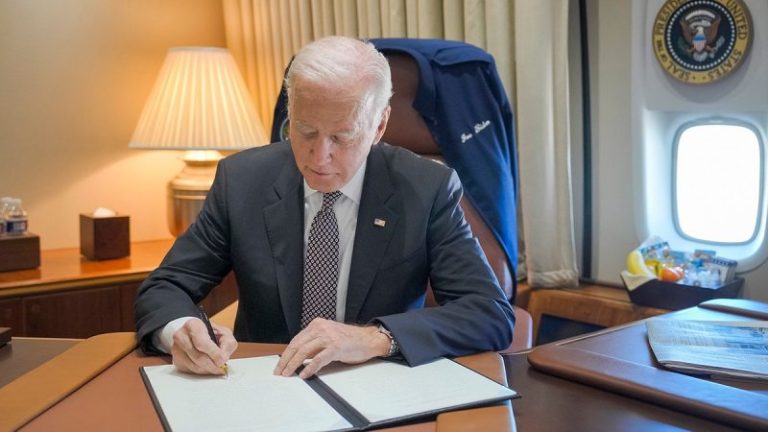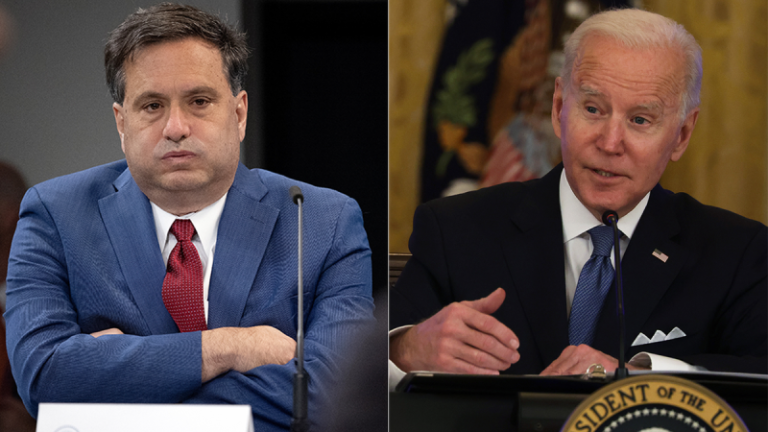The Justice Department has formed a ‘strike force’ to assess the evidence publicized by Director of National Intelligence Tulsi Gabbard relating to former President Barack Obama and his top national security and intelligence officials’ alleged involvement in the origins of the Trump–Russia collusion narrative.
The Department of Justice (DOJ), Wednesday evening, announced the formation of the ‘strike force,’ to investigate potential next legal steps which may stem from Gabbard’s recent declassification of records suggesting that Obama administration officials ‘manufactured’ intelligence to form the narrative that then-candidate Donald Trump was colluding with Russia to influence the 2016 presidential election.
Justice Department officials told Fox News Digital that the DOJ takes the alleged weaponization of the intelligence community with ‘the utmost seriousness.’
A source familiar with the strike force told Fox News Digital that everything is being reviewed and that no serious lead is off the table.
The source told Fox News Digital that the National Security Division of the Justice Department will ‘likely be involved in the investigation.’
‘The Department of Justice is proud to work with my friend Director Gabbard and we are grateful for her partnership in delivering accountability for the American people,’ Attorney General Pam Bondi said.
‘We will investigate these troubling disclosures fully and leave no stone unturned to deliver justice,’ she said.
The strike force consists of teams made up of investigators and prosecutors that focus on ‘the worst offenders engaged in fraudulent activities, including, chiefly, health care fraud, wire fraud, mail fraud, bank fraud, money laundering offenses, false statements offenses,’ and more, according to the DOJ.
The formation of the strike force comes after a slew of developments related to the origins of the Trump–Russia investigation.
Earlier in July, CIA Director John Ratcliffe sent a criminal referral for former CIA Director John Brennan to the FBI.
The referral came after Ratcliffe declassified a ‘lessons learned’ review of the creation of the 2017 Intelligence Community Assessment (ICA). The 2017 ICA alleged Russia sought to influence the 2016 presidential election to help then-candidate Trump. But the review found that the process of the ICA’s creation was rushed with ‘procedural anomalies,’ and that officials diverted from intelligence standards.
It also determined that the ‘decision by agency heads to include the Steele Dossier in the ICA ran counter to fundamental tradecraft principles and ultimately undermined the credibility of a key judgment.’
The dossier — an anti-Trump document filled with unverified and wholly inaccurate claims that was commissioned by Fusion GPS and paid for by Democrat presidential candidate Hillary Clinton’s campaign and the DNC — has been widely discredited. The review marks the first time career CIA officials have acknowledged politicization of the process by which the ICA was written, particularly by Obama-era political appointees.
Records declassified as part of that review further revealed that Brennan did, in fact, push for the dossier to be included in the 2017 ICA.
FBI Director Kash Patel received the criminal referral and opened an investigation into Brennan.
Patel also opened a criminal investigation into former FBI Director James Comey.
The full scope of the criminal investigations into Brennan and Comey is unclear, but two sources described the FBI’s view of the duo’s interactions as a ‘conspiracy,’ which could open up a wide range of potential prosecutorial options.
The FBI and CIA declined to comment.
Neither Brennan nor Comey immediately responded to Fox News Digital’s request for comment.
Days later, Gabbard declassified documents revealing ‘overwhelming evidence’ that demonstrated how, after Trump won the 2016 election against Clinton, then-President Obama and his national security team laid the groundwork for what would be the yearslong Trump–Russia collusion probe.
Gabbard said the documents revealed that Obama administration officials ‘manufactured and politicized intelligence’ to create the narrative that Russia was attempting to influence the 2016 presidential election, despite information from the intelligence community stating otherwise.
The new documents name Obama, top officials in his National Security Council, then-Director of National Intelligence James Clapper, then-CIA Director Brennan, then-National Security Advisor Susan Rice, then-Secretary of State John Kerry, then-Attorney General Loretta Lynch, and then-Deputy FBI Director Andrew McCabe, among others.
Gabbard, on Monday, sent a criminal referral to the Justice Department related to those findings. DOJ officials did not share further details on whom the criminal referral was for.
And on Wednesday, Gabbard declassified documents that showed that the intelligence community did not have any direct information that Russian President Vladimir Putin wanted to help elect Trump during the 2016 presidential election, but, at the ‘unusual’ direction of Obama, published ‘potentially biased’ or ‘implausible’ intelligence suggesting otherwise.
That information came from a report prepared by the House Permanent Select Committee on Intelligence back in 2020.
The report, which was based on an investigation launched by former House Intelligence Committee Chairman Devin Nunes, R-Calif., was dated Sept. 18, 2020. At the time of the publication of the report, Rep. Adam Schiff, D-Calif., was the chairman of the committee.
The report has never before been released to the public, and instead, has remained highly classified within the intelligence community.
Meanwhile, Fox News Digital, in 2020, exclusively obtained the declassified transcripts of Obama-era national security officials’ closed-door testimonies before the House Intelligence Committee, in which those officials testified that they had no ’empirical evidence’ of a conspiracy between the Trump campaign and Russia in the 2016 election, but continued to publicly push the ‘narrative’ of collusion.
The House Intelligence Committee, in 2017, conducted depositions of top Obama intelligence officials, including Clapper, Rice and Lynch, among others.
The officials’ responses in the transcripts of those interviews align with the results of former Special Counsel Robert Mueller’s investigation — which found no evidence of criminal coordination between the Trump campaign and Russia in 2016, while not reaching a determination on obstruction of justice.
The transcripts, from 2017 and 2018, revealed top Obama officials were questioned by House Intelligence Committee lawmakers and investigators about whether they had or had seen evidence of such collusion, coordination or conspiracy — the issue that drove the FBI’s initial case and later the special counsel probe.
‘I never saw any direct empirical evidence that the Trump campaign or someone in it was plotting/conspiring with the Russians to meddle with the election,’ Clapper testified in 2017. ‘That’s not to say that there weren’t concerns about the evidence we were seeing, anecdotal evidence…. But I do not recall any instance where I had direct evidence.’
Lynch also said she did ‘not recall that being briefed up to me.’
‘I can’t say that it existed or not,’ Lynch said, referring to evidence of collusion, conspiracy or coordination.
But Clapper and Lynch, and then Vice President Joe Biden, were present in the Oval Office July 28, 2016, when Brennan briefed Obama and Comey on intelligence he’d received from one of Clinton’s campaign foreign policy advisors ‘to vilify Donald Trump by stirring up a scandal claiming interference by the Russian security service.’
‘We’re getting additional insight into Russian activities from (REDACTED),’ read Brennan’s handwritten notes, exclusively obtained by Fox News Digital in October 2020. ‘CITE (summarizing) alleged approved by Hillary Clinton a proposal from one of her foreign policy advisers to vilify Donald Trump by stirring up a scandal claiming interference by the Russian security service.’
Meanwhile, former U.S. Ambassador to the United Nations Samantha Power, according to the transcript of her interview to the House Intelligence Committee, was asked whether she had or saw any evidence of collusion or conspiracy.
Power replied: ‘I am not in possession of anything — I am not in possession and didn’t read or absorb information that came from out of the intelligence community.’
When asked again, she said: ‘I am not.’
Rice was asked the same question.
‘To the best of my recollection, there wasn’t anything smoking, but there were some things that gave me pause,’ she said, according to her transcribed interview, in response to whether she had any evidence of conspiracy. ‘I don’t recall intelligence that I would consider evidence to that effect that I saw… conspiracy prior to my departure.’
When asked whether she had any evidence of ‘coordination,’ Rice replied: ‘I don’t recall any intelligence or evidence to that effect.’
Meanwhile, former FBI Deputy Director McCabe was not asked that specific question but rather questions about the accuracy and legitimacy of the unverified anti-Trump dossier compiled by ex-British intelligence officer Christopher Steele.
McCabe was asked during his interview in 2017 what was the most ‘damning or important piece of evidence in the dossier that’ he ‘now knows is true.’
McCabe replied: ‘We have not been able to prove the accuracy of all the information.’
‘You don’t know if it’s true or not?’ a House investigator asked, to which McCabe replied: ‘That’s correct.’
After Trump’s 2016 victory and during the presidential transition period, Comey briefed Trump on the now-infamous anti-Trump dossier, containing salacious allegations of purported coordination between Trump and the Russian government. Brennan was present for that briefing, which took place at Trump Tower in New York City in January 2017.
The dossier was authored by Steele. It was funded by Clinton’s presidential campaign and the Democratic National Committee through the law firm Perkins Coie.
But Brennan and Comey knew of intelligence suggesting Clinton, during the campaign, was stirring up a plan to tie Trump to Russia, documents claim. It is unclear whether the intelligence community, at the time, knew that the dossier was paid for by Clinton and the DNC.
The Obama-era officials have been mum on the new revelations, but a spokesman for Obama on Tuesday made a rare public statement.
‘Out of respect for the office of the presidency, our office does not normally dignify the constant nonsense and misinformation flowing out of this White House with a response,’ Obama spokesman Patrick Rodenbush said in a statement. ‘But these claims are outrageous enough to merit one.’
‘These bizarre allegations are ridiculous and a weak attempt at distraction,’ Obama’s spokesman continued. ‘Nothing in the document issued last week undercuts the widely accepted conclusion that Russia worked to influence the 2016 presidential election but did not successfully manipulate any votes.’
He added: ‘These findings were affirmed in a 2020 report by the bipartisan Senate Intelligence Committee, led by then-Chairman Marco Rubio.’
This post appeared first on FOX NEWS










